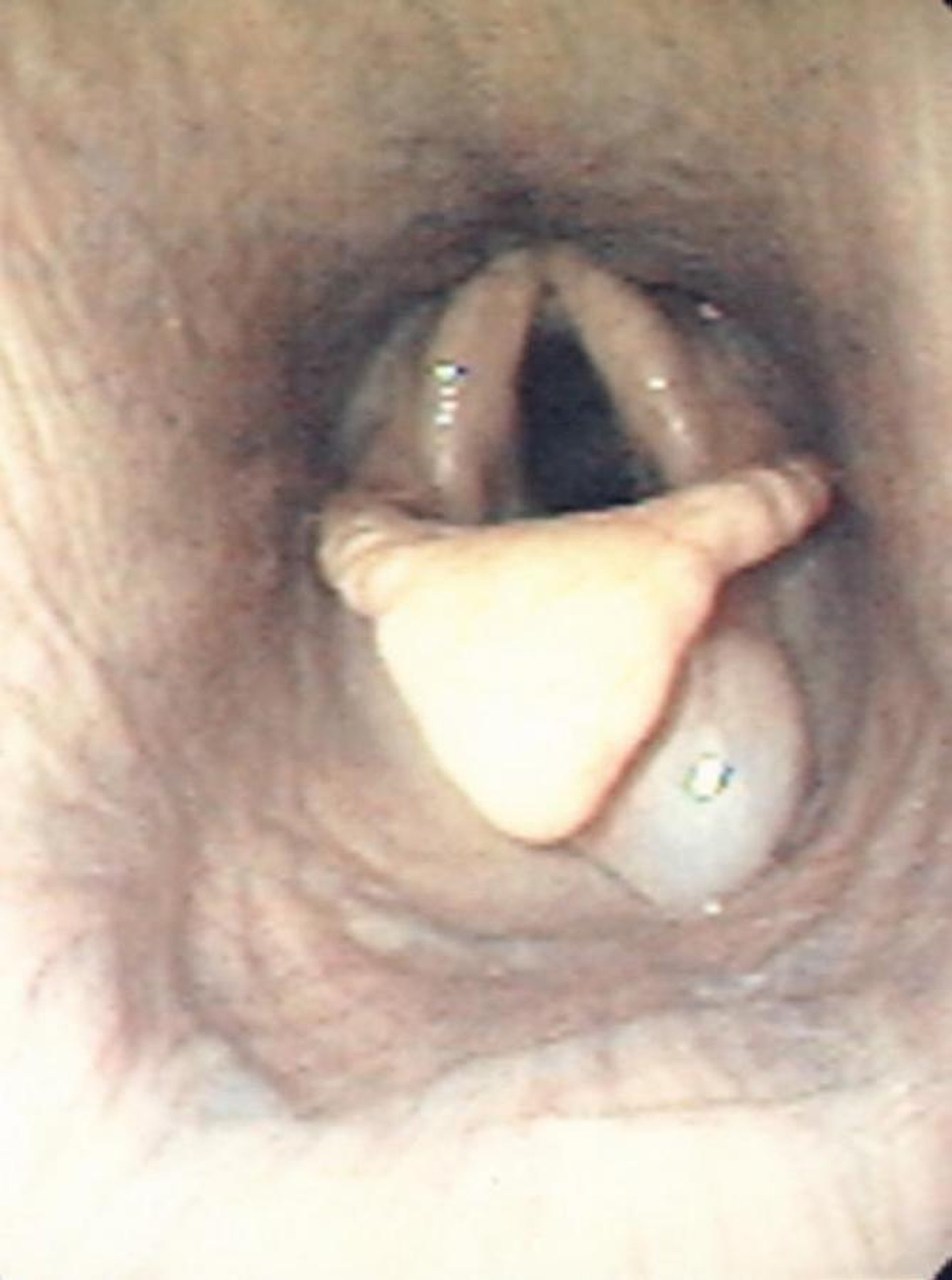Courtesy of Dr. Bonnie R. Rush.
Subepiglottic cysts are an uncommon cause of respiratory noise in young horses but have been reported in Thoroughbreds and more rarely in Standardbreds and Quarter Horses. They are likely present from birth but may remain undetected until the horse begins exercise training. These cysts are suspected to arise from remnants of the thyroglossal duct but an association with inflammation of mucous secreting glands in the pharynx has also been proposed.
Diagnosis of Subepiglottic Cyst in Horses
Clinical signs, when present, include respiratory noise and exercise intolerance. Large cysts may produce coughing, nasal discharge, dysphagia, upper respiratory tract obstruction, and aspiration in foals. Diagnosis is most often possible with endoscopic examination of the nasopharynx. The cyst appears as a smooth-walled, fluctuant mass that contains thick, yellow, mucoid material. Occasionally, the mass is not visible in the nasopharynx, and radiography or oral examination (direct or endoscopic) under general anesthesia may be required to identify it. Histologically, subepiglottic cysts are lined with a combination of stratified squamous and pseudostratified columnar epithelium.
Treatment of Subepiglottic Cyst in Horses
Treatment involves complete removal of the secretory lining of the cyst. Rupture of the cyst results in immediate decompression; however, recurrence is common. The most common approach is peroral surgery under general anesthesia, using transendoscopic Nd:YAG laser or snare (electrocautery or cyst) for complete excision.
For More Information
Also see pet health content regarding subepiglottic cyst in horses.

